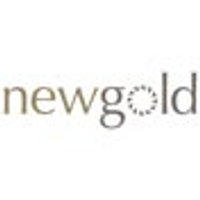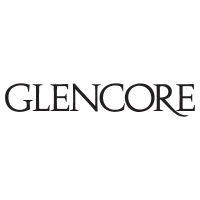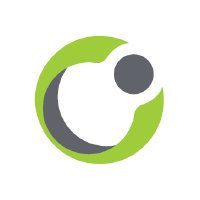
New Gold Inc
TSX:NGD


| US |

|
Johnson & Johnson
NYSE:JNJ
|
Pharmaceuticals
|
| US |

|
Berkshire Hathaway Inc
NYSE:BRK.A
|
Financial Services
|
| US |

|
Bank of America Corp
NYSE:BAC
|
Banking
|
| US |

|
Mastercard Inc
NYSE:MA
|
Technology
|
| US |

|
UnitedHealth Group Inc
NYSE:UNH
|
Health Care
|
| US |

|
Exxon Mobil Corp
NYSE:XOM
|
Energy
|
| US |

|
Pfizer Inc
NYSE:PFE
|
Pharmaceuticals
|
| US |

|
Palantir Technologies Inc
NYSE:PLTR
|
Technology
|
| US |

|
Nike Inc
NYSE:NKE
|
Textiles, Apparel & Luxury Goods
|
| US |

|
Visa Inc
NYSE:V
|
Technology
|
| CN |

|
Alibaba Group Holding Ltd
NYSE:BABA
|
Retail
|
| US |

|
JPMorgan Chase & Co
NYSE:JPM
|
Banking
|
| US |

|
Coca-Cola Co
NYSE:KO
|
Beverages
|
| US |

|
Walmart Inc
NYSE:WMT
|
Retail
|
| US |

|
Verizon Communications Inc
NYSE:VZ
|
Telecommunication
|
| US |

|
Chevron Corp
NYSE:CVX
|
Energy
|
Utilize notes to systematically review your investment decisions. By reflecting on past outcomes, you can discern effective strategies and identify those that underperformed. This continuous feedback loop enables you to adapt and refine your approach, optimizing for future success.
Each note serves as a learning point, offering insights into your decision-making processes. Over time, you'll accumulate a personalized database of knowledge, enhancing your ability to make informed decisions quickly and effectively.
With a comprehensive record of your investment history at your fingertips, you can compare current opportunities against past experiences. This not only bolsters your confidence but also ensures that each decision is grounded in a well-documented rationale.
Do you really want to delete this note?
This action cannot be undone.

| 52 Week Range |
3.52
11.76
|
| Price Target |
|
We'll email you a reminder when the closing price reaches CAD.
Choose the stock you wish to monitor with a price alert.

|
Johnson & Johnson
NYSE:JNJ
|
US |

|
Berkshire Hathaway Inc
NYSE:BRK.A
|
US |

|
Bank of America Corp
NYSE:BAC
|
US |

|
Mastercard Inc
NYSE:MA
|
US |

|
UnitedHealth Group Inc
NYSE:UNH
|
US |

|
Exxon Mobil Corp
NYSE:XOM
|
US |

|
Pfizer Inc
NYSE:PFE
|
US |

|
Palantir Technologies Inc
NYSE:PLTR
|
US |

|
Nike Inc
NYSE:NKE
|
US |

|
Visa Inc
NYSE:V
|
US |

|
Alibaba Group Holding Ltd
NYSE:BABA
|
CN |

|
JPMorgan Chase & Co
NYSE:JPM
|
US |

|
Coca-Cola Co
NYSE:KO
|
US |

|
Walmart Inc
NYSE:WMT
|
US |

|
Verizon Communications Inc
NYSE:VZ
|
US |

|
Chevron Corp
NYSE:CVX
|
US |
This alert will be permanently deleted.
New Gold Inc
New Gold Inc. operates as a compelling narrative in the world of mining, characterized by both its resilience and strategic evolution. Established in 1980 and headquartered in Toronto, Canada, the company embarked on its journey to harness the potential of precious metals, primarily gold and silver, with copper as a significant byproduct. New Gold's business model revolves around the exploration, development, and operation of mineral properties. The company’s primary assets include the Rainy River Mine in Ontario and the New Afton Mine in British Columbia. These strategic geographies not only provide a stable regulatory and economic environment but also significant reserves that propel the company’s growth trajectory.
The company's revenue streams are predominantly driven by the sale of gold and copper, with silver playing a supportive yet valuable role. New Gold’s financial health hinges on efficient production at its operational mines, continuous exploration to extend mines' life, and prudent capital expenditure decisions. By focusing on sustainable mining practices, the company aims to mitigate environmental impacts and address social responsibilities, often an essential agenda item for stakeholders. The financial performance, carefully balanced by the fluctuating dynamics of global commodity markets and operational efficiencies, is a testament to New Gold's adaptive strategies and forward-thinking initiatives, which allow it to carve a distinct niche in a highly competitive industry.

New Gold Inc. operates as a compelling narrative in the world of mining, characterized by both its resilience and strategic evolution. Established in 1980 and headquartered in Toronto, Canada, the company embarked on its journey to harness the potential of precious metals, primarily gold and silver, with copper as a significant byproduct. New Gold's business model revolves around the exploration, development, and operation of mineral properties. The company’s primary assets include the Rainy River Mine in Ontario and the New Afton Mine in British Columbia. These strategic geographies not only provide a stable regulatory and economic environment but also significant reserves that propel the company’s growth trajectory.
The company's revenue streams are predominantly driven by the sale of gold and copper, with silver playing a supportive yet valuable role. New Gold’s financial health hinges on efficient production at its operational mines, continuous exploration to extend mines' life, and prudent capital expenditure decisions. By focusing on sustainable mining practices, the company aims to mitigate environmental impacts and address social responsibilities, often an essential agenda item for stakeholders. The financial performance, carefully balanced by the fluctuating dynamics of global commodity markets and operational efficiencies, is a testament to New Gold's adaptive strategies and forward-thinking initiatives, which allow it to carve a distinct niche in a highly competitive industry.
Strong Production: Q3 saw record gold production at Rainy River, up 63% over Q2, with consolidated production of about 115,200 ounces of gold and 12 million pounds of copper.
Cost Improvement: All-in sustaining costs dropped significantly to $966 per ounce, a 19% decrease from Q3 2024 and $425 lower than Q2, with further declines expected in Q4.
Exceptional Free Cash Flow: The company generated a record $205 million in free cash flow, led by Rainy River’s $183 million, and over $300 million in cash from operations.
Debt Reduction: New Gold repaid $260 million in debt during the quarter, including the $150 million credit facility, ahead of schedule.
Guidance Maintained: Management reaffirmed their 2025 production and cost guidance and expects to exceed previous free cash flow projections through 2027.
Exploration Success: Significant progress was made at New Afton’s K-Zone and Rainy River, with increased exploration budgets and resource growth.
Capital Allocation: Focus remains on maintaining a strong balance sheet, investing in organic growth and exploration, with capital returns to shareholders currently under Board review.








































